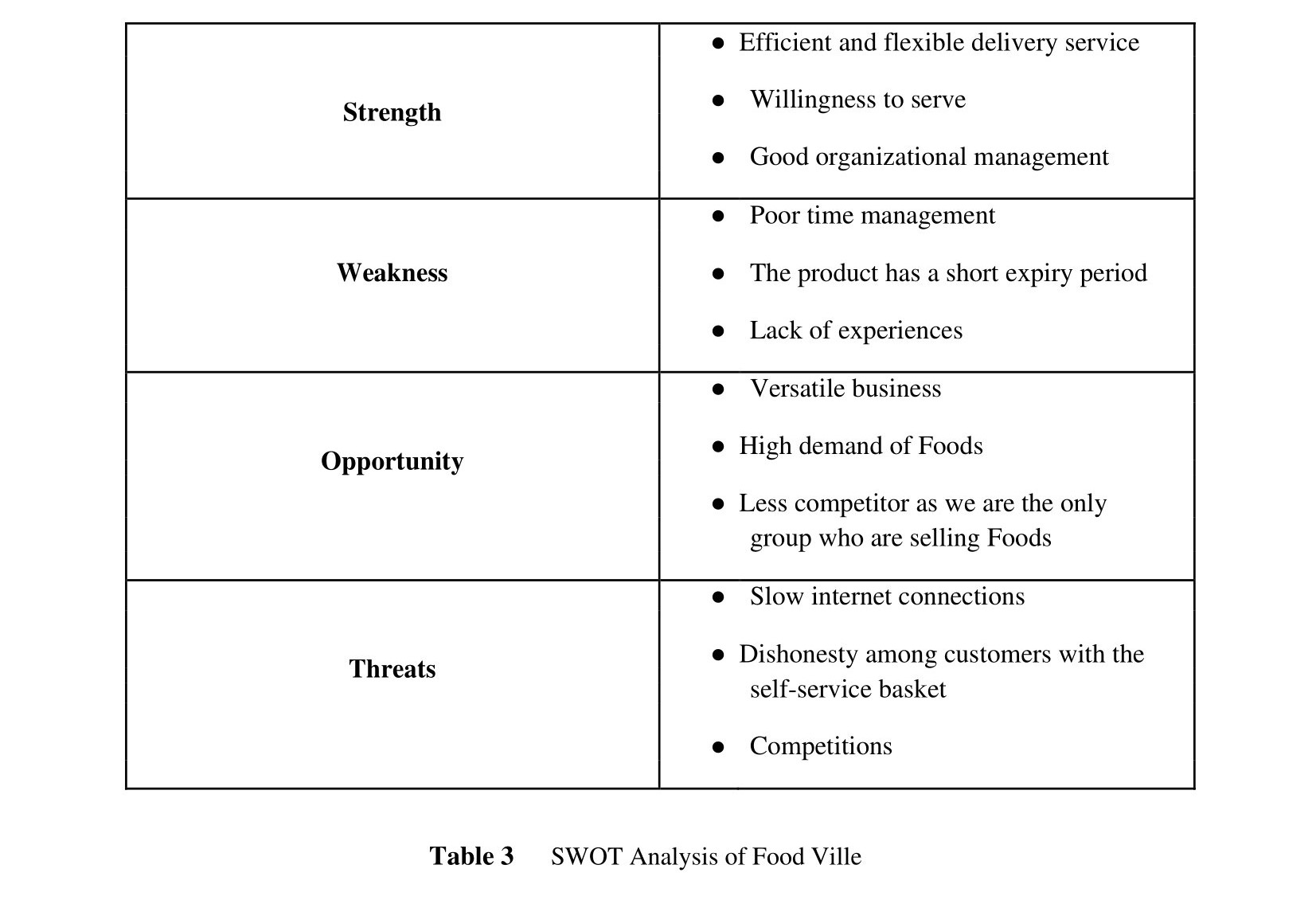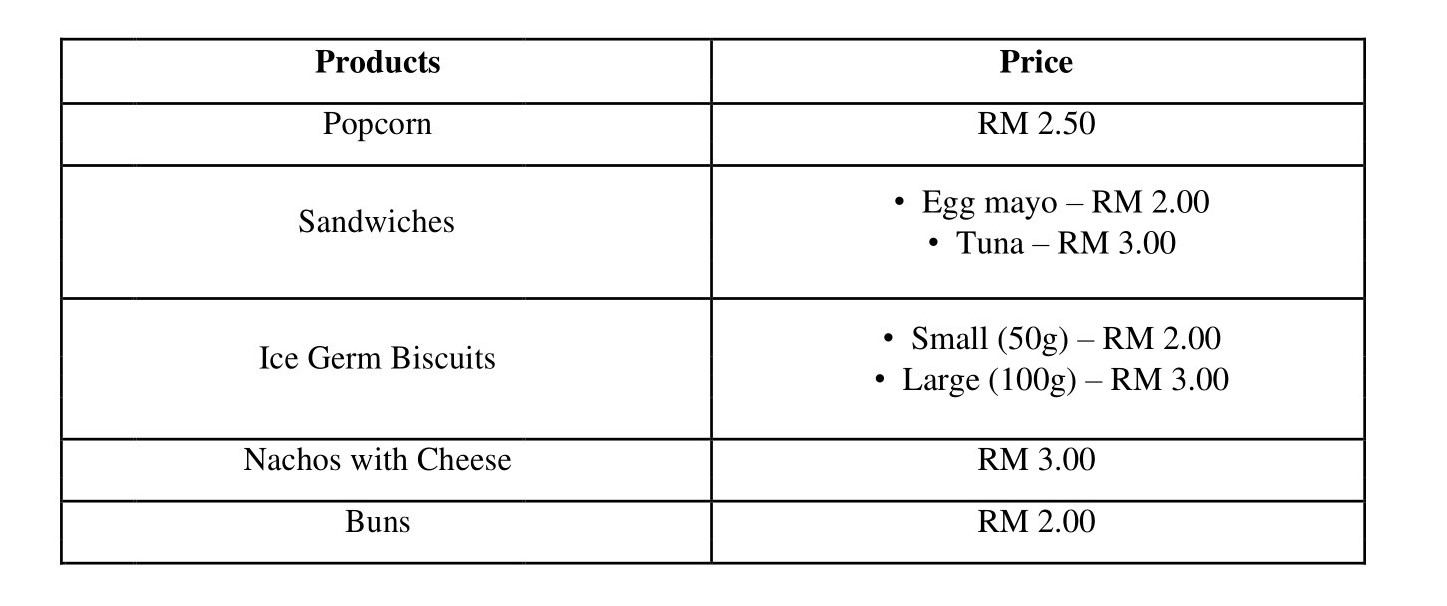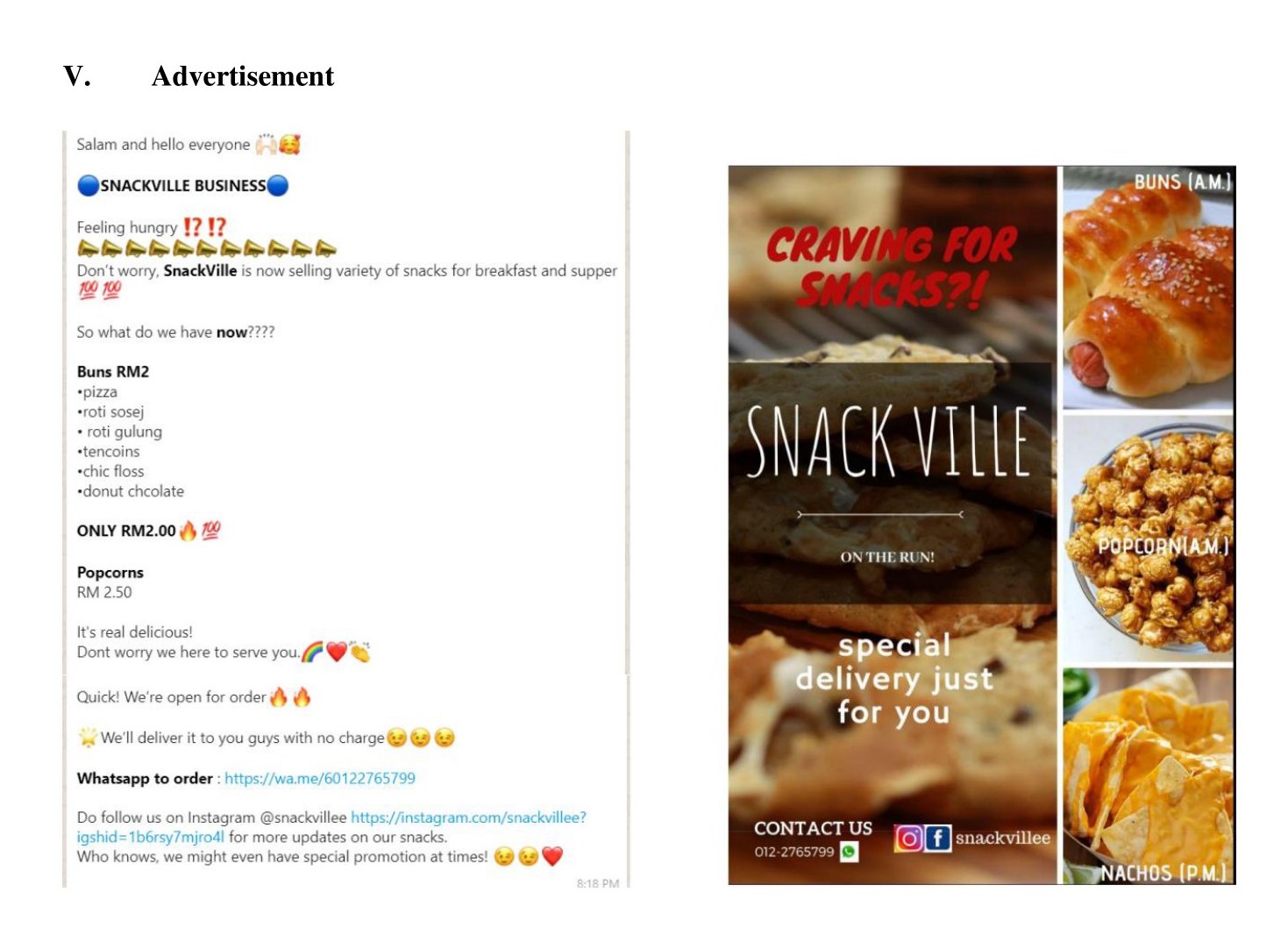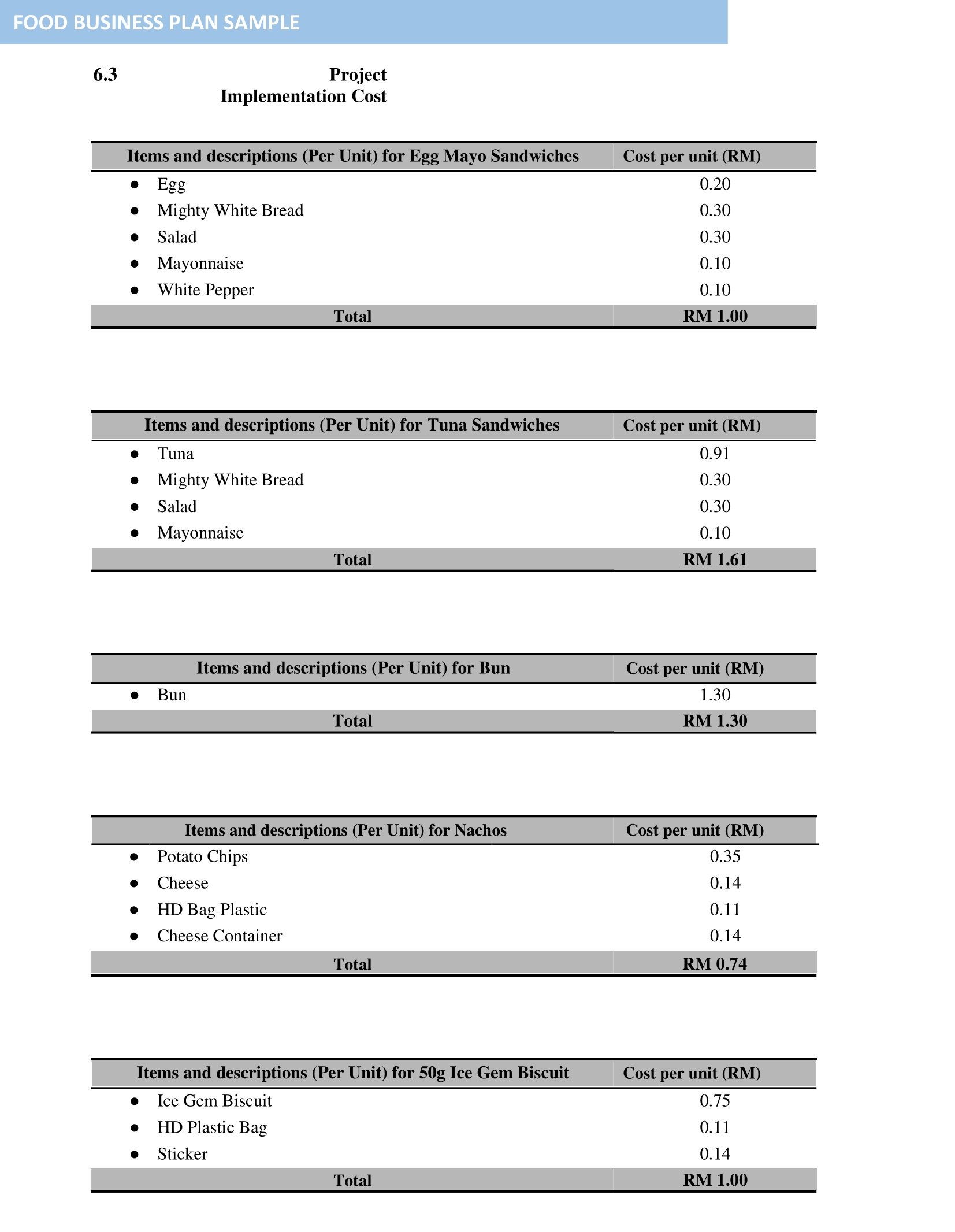This article offers a Food Business Plan Sample pdf or Sample Business Plan for Food Products. Students might follow this article to complete their assignment, for example, “Business Plan Examples for Students about Food.”
Food Business Plan Sample
The food business plan sample refers to the business proposal example for food products. The author presents a food business plan example for students and employees about food. It helps them write business plan samples for food products, including cookies, cakes, burgers, popcorn, and sandwiches. Therefore, students can follow this food business plan sample for writing other business plans relevant to food products. The business plan sample for food shows how to start a new business with food products. It is also known as a business plan and business report sample for food products.
Business Plan Examples For Students About Food
The author writes the following business plan sample for food products to explain how to write a business plan. It will assist the students in completing assignments. The food is the most profitable business in the world. Therefore, it also helps entrepreneurs evaluate their business ideas before implementing them.

1.0 Executive Summary
We established the Food Vile around the area of the 17th residential college (Kolej Tujuh Belas) and the Faculty of Medicine and Health Science, University Putra Malaysia (UPM). Our business provides delivery services of light foods at times when the cafeteria is less accessible or during rush hours. The emphasis on food delivery has led to the birth of our company’s name, Food Ville.
The main reason for us starting this business is that we notice most students have the problem of getting something to eat early in the morning. The cafeteria usually sells heavy meals, such as in the morning, and students will either not have enough time to eat or have no appetite for those kinds of food. We also found that most students skipped breakfast to rush to class, which is highly unhealthy.
Besides peak hours in the morning, students also usually crave light foods at night while being busy with academic matters. Unfortunately, the only vending machine for soft foods is only available in Block D, which is far away for some students. Thus, we want to serve these students by having delivery service to their doorsteps, saving them time and energy.
2.0 Background
2.1 Introduction to Business
Food Ville is a new restaurant at the 17th Residential College (Kolej Tujuh Belas) and the Faculty of Medicine and Health Science, University Putra Malaysia (UPM).
Sandwich is our main product and also the main idea to start our entrepreneurship. After that, we decided to sell various foods such as buns, nachos, popcorn, and ice gem biscuits to attract the attention of the people; therefore, each of our committee members provided new ideas and products to increase our business sales.
We started this business because we wanted to provide customers with cheaper and more affordable food. We also spotted that time is a problem for most students here in the faculty, as most of us need to rush to class early in the morning and might not have time for breakfast. Late at night, the café is also closed thus limiting access to food. Thus. We provide delivery service for our customers, especially early in the morning and also at night. Our foods are good for breakfast before class and supper late at night.
2.2 Agreement Letter
This letter outlines the terms and conditions of the agreement that shareholders need to agree to:
- The name of the business is Food Ville.
- The business operation starts on 17 November 2019 and ends on 7 December 2019
-
The organization is as below:

- Shareholders agree to pay RM25.00 as start-up capital.
- The profits and losses from the business will be distributed according to the money that has been contributed.
- Each partner must work as a team to implement the company and solve problems.
- We take every decision or action based on discussion by every partner.
- The top management is the only authority to approve any expenses or transactions.
- All rules and regulations stated in the agreement are conclusive. Any future changes will be made according to the suitability and importance of the business.
- If any member is found violating this agreement, a police report will be made, and law action will be taken accordingly.
2.3 Objectives of Business
Food Ville has the following goals and objectives:
- Become an established community destination with a customer satisfaction rate of at least 90% by the end of the operation period.
- Achieve cash flow self-sufficiency by the end of the operation period.
- Repay debt from original financing by the end of the operation period.
2.4 Vision and Missions Statement
Vision: To become the most accessible food provider in 17th Residential College as well as the Faculty of Medicine and Health Sciences.
Mission: To provide quality and yummy Food for breakfast and supper, as well as fast and flexible delivery services, to achieve 100% customer satisfaction.
2.5 Company Overview
The company’s motto, “On The Run,” was chosen as our characteristic and also as an attraction to our customers due to our fast and punctual special delivery services. Below is our company’s logo.
The logo also consists of our company’s name, “Food Ville,” as we want our customers to know that we also sell a variety of Food in addition to sandwiches. Our motto, “On The Run,” is attached to the logo, which means we are always ready to serve and deliver our products quickly and on time.
3.0 Administrative and Human Resource Plan
3.1 Business Strategy
Business strategy is crucial to maintain or amplify a company’s growth. Good business strategies are not influenced by the personal preferences of corporate management. Based on strategy in our company, there are some highlights on the function of every department to ensure the plan runs significantly. To meet the targeted goal in our business plan, we have put as much emphasis on the efficiency of each department. Our company has made several strategies to achieve our objectives. We have chosen the system based on every department suggestion in our company.
Administration and Human Resources Department
- Ensure all the business operations are followed according to the procedure and manage the co-workers and administration problems.
- It addresses and solves problems that affect people management programs in the long run.
Marketing Department
- To ensure that our products are fully advertised and promote our best services by giving a reasonable price.
- We are promoting the business and mission of an organization through social media.
Operational Department
- To ensure that all the equipment and materials run smoothly and also to maintain the operation of all products are effective and of good quality.
- This department has the ultimate accountability for profit and loss and seeks to maximize return on investment for the shareholders.
4.0 Marketing Plan
4.1 Introduction
The marketing plan is the process of marketing which includes finding, understanding, and meeting customers’ needs as well as building public awareness of the brand. It is used to determine the effectiveness of how a company’s product is being known to the public and helps to ensure that the marketing plan, marketing strategies, and overall business strategy all work together. A company should always have a proper and systematic marketing plan to run things smoothly.
Our company, Food Ville, managed to have a very proper and systematic marketing plan because of a skillful marketing manager. Our marketing manager can market, market and promote our products to be well-known to the residents of 17th college as our target markets are them. Before our company even decided to sell our products, which include various types of Foods, our marketing manager efficiently managed the marketing plan. Some of the marketing strategies used included promoting through promotions like posters or social media accounts, pricing strategies, and many more.
4.2 Product Description
Our products are sandwiches, buns, ice gem biscuits, nachos with cheese, and popcorn.
For sandwiches, there will be two flavors: tuna and egg mayonnaise. The sandwiches are made with hard dough bread, giving customers a better taste and texture to enjoy the sandwiches. We will also add salad to the sandwiches to balance the customers’ diets and provide high nutritional value. The sandwiches are packaged with plastic wrap.
For the bun, we will buy the bun from the supplier and repack them to sell. Hence, we will order 100 units of bun every three days from the supplier to ensure that the bun we sell to the customers is always fresh and the customers can believe in our brand. The type of bun consists of a pizza bun, hot dog bun, ten-coins bun, chocolate doughnut, chicken floss doughnut, creamy bun, and gourmet bread topping with butter and sugar.
For the biscuits, our product is ice gem biscuits. We will buy a bucket of ice gem biscuits which is 4 kg, and repack them into small packages for sale. There are two types of packages, one is a small pack, and another is a large pack. The small box contains 50g of ice gem biscuits, while the large pack contains 100g of ice gem biscuits.
We will buy a large packet of potato chips for the nachos and repack them into small packages, which are 50g of chips for sale. And we also have a small can of cheese in it.
For the popcorn, we buy 1 kg of each flavor of the popcorn, which is butterfly caramel popcorn and mushroom caramel popcorn, then repack them into small packages, which is 50g of popcorn.
4.3 Target Market
The main target of our business is UPM students, lecturers, and staff from the Faculty of Medicine and Health Science, who do not have enough time to prepare or eat their breakfast due to the morning class. We also target the people who are looking for cheap and affordable breakfast and supper—the archery students are also in our target lists.
4.4 Competitions
Other businesses are also selling bread and Food in the area of 17th Residential College (Kolej Tujuh Belas), such as the cafeteria and the coop mart of 17th Residential College. Moreover, the price of bread and Food is also affordable for the students, and this will compete with our business. Therefore, our company supplies fresh homemade sandwiches and different kinds of bun, with free special delivery services to become our company’s attraction.
4.5 SWOT Analysis
We have followed to identify favorable and unfavorable circumstances (internal or external) that may affect Food Ville’s business operation.
Table 3 below shows the analysis.

4.6 Marketing Strategies
In promoting our Foods, various marketing strategies were chosen.
Delivery services
In terms of services, our company uses delivery service as a major platform for promoting our Foods. We deliver food for the morning (breakfast) and also late at night for supper. We always want to deliver food to meet the customer’s demand and satisfaction. Apart from that, we have also set 2 employees to deliver food.
Location
In selling our Foods, we solely used delivery services as a major platform as we do not have a specific stall or a fixed location to see our products.
Pricing strategies
Food Ville sells food at a very reasonable price to attract more customers. Even though we sold our products at reasonable prices, we managed to lower the price at the end of the carnival to sell and finish up the stocks fully.
The price of our products is as follows:

Promotion
Social media is used as a platform to promote our various types of Foods. We managed to promote Food Ville so that it is known to all 17th college residents through social media accounts like Instagram, Twitter, and also Facebook.
We also did a few other promotions by distributing our posters to students, lecturers, and academic staff of the medicine and health sciences faculty.
Advertisement

5.0 Operation Plan
5.1 Introduction
The operation plan is part of the business’s strategic plan and is important for effective business leadership. The operation plan can describe how the plan works, including listing all the strategies and providing a budget summary and the workflow from input to results of the business.
Operation management refers to the administration of business practices to create the highest level of efficiency possible within an organization. To have good operation management, each of us must understand the processes essential to what a company does and get them to flow and work together. This involves utilizing resources from the suppliers, raw materials, and equipment.
The operation plan is a crucial part of our business. The Operational plan aims to provide organization personnel with a clear picture of their tasks and responsibilities in line with the goals and objectives. Therefore, we divided the operation plan into several parts: operation objectives, operation strategies, material planning, and implementation schedule to ensure our business runs effectively.
5.2 Operation Objective
The operation objectives for Food Ville:
- To ensure the operations of our business run smoothly
- To produce high-quality products that can fulfill our customer satisfaction and expectations.
- To have a good service and function well to meet our customer’s demand
- To ensure our business is profitable and able to expand
- To accomplish consistency in the services offered
5.3 Operation Strategies
To ensure that our business runs smoothly throughout the week and meets our objectives, we set the following strategies:
- Build a delivery service schedule.
- It also ensures the Foods that are being delivered meet the guarantee that has been offered by us.
- Ask for feedback on our Foods.
5.4 Process Planning
5.5 Material Planning
- For buns, nachos, popcorn, and biscuits, we ordered them from the supplier.
- For sandwiches:
| Raw materials | Fix assets |
|
|
5.6 Implementation Schedule
6.0 Financial Plan
6.1 Introduction
A financial plan is a process of framing objectives, procedures, and budgets regarding the financial activities of concern. We use it to ensure effectiveness and adequate financial and investment policies.
Generally, an organization uses the financial plan to know an individual’s current pay and future financial state by using current known variables to predict future income, asset values, and withdrawal plans.
A financial plan is one of the most crucial parts of a business. Some of the important financial plans are:
- Firstly, it provides the direction of one’s business
- Secondly, it helps understand how finances impact one’s business
- It also helps to manage income better.
6.2 Objective of the Financial Department
A few objectives have been determined as below:
Firstly, it determines capital requirements.
Secondly, It utilizes the fund sufficiently for different purposes.
Thirdly, the financial department maintains proper cash flow.
6.3 Project Implementation Cost

Source of Fund:
Our own money is used as the start-up capital with a contribution of RM25.00 per shareholder and a loan of RM50.00 from our lecturer, Dr. Sabrina, bringing the total start-up to RM350.00.
Conclusion
Food Ville Sdn Bhd has a net profit margin of 30.13%. For every RM 1 in sales, the business makes a net profit of RM 0.30. The 12 shareholders will share the profits.
Food Ville Sdn Bhd also has a break-even point of RM 266.95. Since sales passing this break-even point means that Food Ville Sdn Bhd can start making profits.
Buns have a break-even point at RM 103.77 (sale of 52 units), and the egg mayonnaise sandwich has it at RM 39.21 (sale of 20 units). The break-even point for a tuna sandwich is RM 36.58 (sale of 13 units). For nachos with cheese, it is RM 27.26 (sale of 4 units); for 50g ice gem biscuits, it is RM 6.69 (sale of 4 units); for 100g ice gem biscuits, it is RM22.95 (sale of 8 units) while popcorns have a break-even point at RM 30.48 (sale of 13 units).
The return on investment value for the business is 0.961, or 96.1%. Therefore, the shareholders can get back RM 0.96 as profit for every RM 1 capital invested in the business.
Appendices


